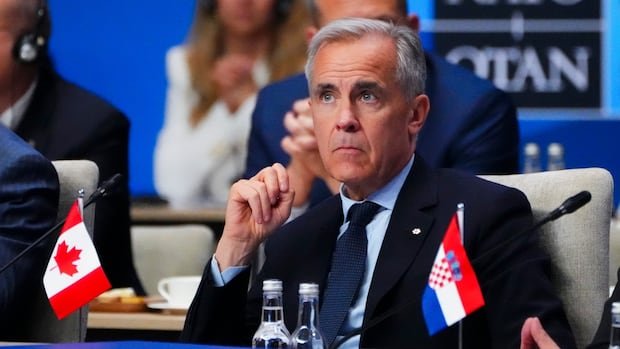
NATO leaders, including Canada, have agreed to a plan to significantly raise defense spending within the Western alliance to five percent of gross domestic product over the next ten years. This decision marks a notable policy win for U.S. President Donald Trump. The leaders convened in the Netherlands behind closed doors to finalize the plan and address any concerns.
During the gathering in The Hague, Prime Minister Mark Carney emphasized the importance of the NATO alliance in safeguarding Canadian sovereignty and the security of Canadians amid evolving global challenges. He stressed the need for Canada to remain strong, united, and prepared to address present and future threats alongside its allies.
While the alliance members endorsed the increase in military funding, they sought a clear commitment from Trump regarding NATO’s Article 5, the self-defense clause. Despite Trump’s public remarks on the matter, senior Canadian officials expressed confidence in the U.S. president’s reassurances, acknowledging the importance of upholding Article 5’s principle of collective defense.
Following the announcement, Trump reiterated his support for Article 5, citing his presence at the summit as a testament to his commitment. NATO Secretary General Mark Rutte commended Trump for spearheading the push for augmented defense spending, emphasizing the shared responsibility among allies to enhance their contributions to the alliance’s defense capabilities.
Carney disclosed that the transition to allocating five percent of GDP for defense expenditure, with 3.5 percent designated for core military outlays and 1.5 percent for defense-related infrastructure, will occur gradually over the next decade. This approach aims to strike a balance between meeting the set targets and adapting to evolving security challenges faced by Canada and other alliance members.
Addressing concerns over the financial implications of the defense spending increase, Carney acknowledged that meeting the new threshold would necessitate significant budgetary commitments. He highlighted the need for strategic investments in defense infrastructure and equipment to bolster Canada’s defense capabilities in the face of emerging threats.
Looking ahead, Carney emphasized the importance of managing the rise in defense spending judiciously to prevent supply shortages and cost escalation. He underscored the collaborative efforts with European allies to synchronize defense investments and enhance deterrence capabilities against potential adversaries targeting the alliance.
As Canada explores diversifying its defense procurement, Carney mentioned discussions with allies regarding the potential acquisition of European fighter jets and submarines as alternatives to existing defense contracts. The prime minister assured a thorough review process for these acquisitions, prioritizing strategic alignment and long-term defense planning.
In conclusion, the proposed increase in defense spending underscores the commitment of NATO members, including Canada, to bolster collective defense capabilities and adapt to evolving security challenges while fostering strategic partnerships and ensuring fiscal responsibility.